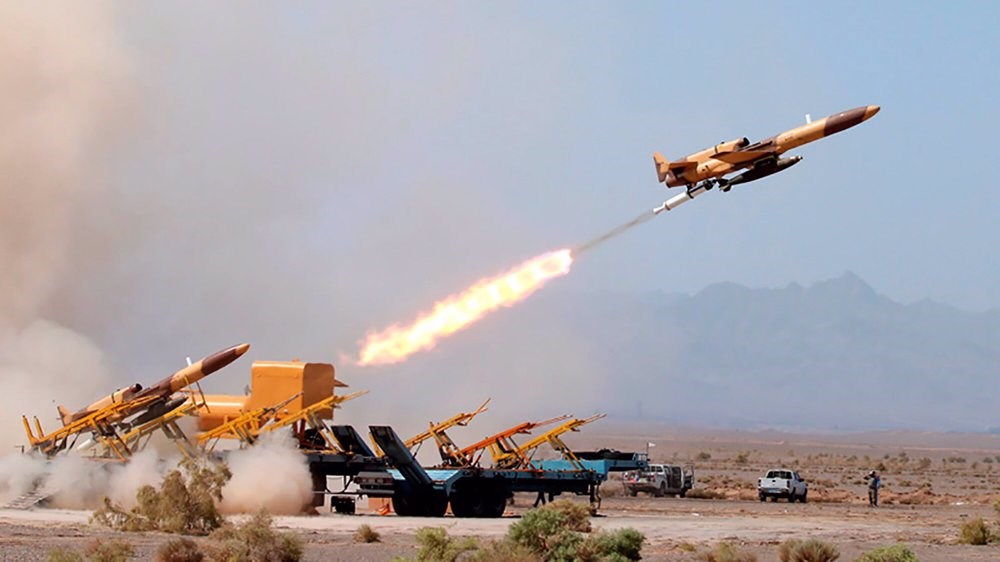Karrar drone; guardian of Iranian skies, warned off US spy aircraft
The deputy commander of Iran's Air Defense Force says the homegrown Karrar drone has repeatedly forced both piloted and unmanned foreign aircraft to change routes away from Iranian airspace.
-

In this file picture, a domestically developed Karrar jet-powered target drone is launched during a military exercise in Iran (Tasnim)
The deputy commander of Iran’s Air Defense Force Brigadier General Alireza Elhami has revealed that Iran's domestically produced Karrar target drone has, on several occasions, issued warnings to American spy planes and other foreign aircraft, forcing them to change course and stay away from Iranian airspace.
Elhami explained that the jet-powered Karrar drone has compelled both manned and unmanned foreign aircraft to alter their course over regions like the Gulf, the Strait of Hormuz, and the Sea of Oman.
He pointed out that Karrar has effectively cautioned American military aircraft, including the Boeing P-8 Poseidon maritime patrol and reconnaissance aircraft, as well as the Northrop Grumman RQ-4 Global Hawk remotely-piloted surveillance aircraft, to maintain a safe distance from Iranian airspace by flying at significantly higher altitudes than the intruding aircraft.
The #Iranian military unveils new weapons in a clear message that proves that the Iranian military is on par with the pioneers in weapons manufacturing. pic.twitter.com/QiS9mbxfet
— Al Mayadeen English (@MayadeenEnglish) August 23, 2023
Elhami also mentioned that foreign military aircraft attempted to test Iran's air defense capabilities by altering their cruising altitudes, without realizing that Karrar, powered by a domestically developed engine, can fly above them. He stressed that Karrar is equipped with an advanced radar system.
In addition to Karrar, Iranian experts within his unit have developed data acquisition and electronic warfare systems, alongside optical and combat field reconnaissance equipment, which are integrated into indigenous drones with various flight capabilities and purposes.
Elhami proudly highlighted that Iran's Air Defense Force has set a service ceiling record by flying a drone at an altitude of 47,000 feet above ground level, surpassing previous achievements where Iranian drones had only issued radar or radio warnings to foreign aircraft approaching Iranian coastal waters or its flight information region (FIR).
It is worth noting that Iran has made substantial progress in producing a wide array of domestic equipment thanks to the expertise of its military professionals and engineers in recent years. This accomplishment has resulted in self-reliance across multiple domains. Iranian authorities have consistently stressed that these military capabilities, including missile capabilities, are exclusively meant for defensive purposes and are not open to negotiation.
Read next: Western countries requested to buy Iranian drones: MoD Spox

 2 Min Read
2 Min Read








